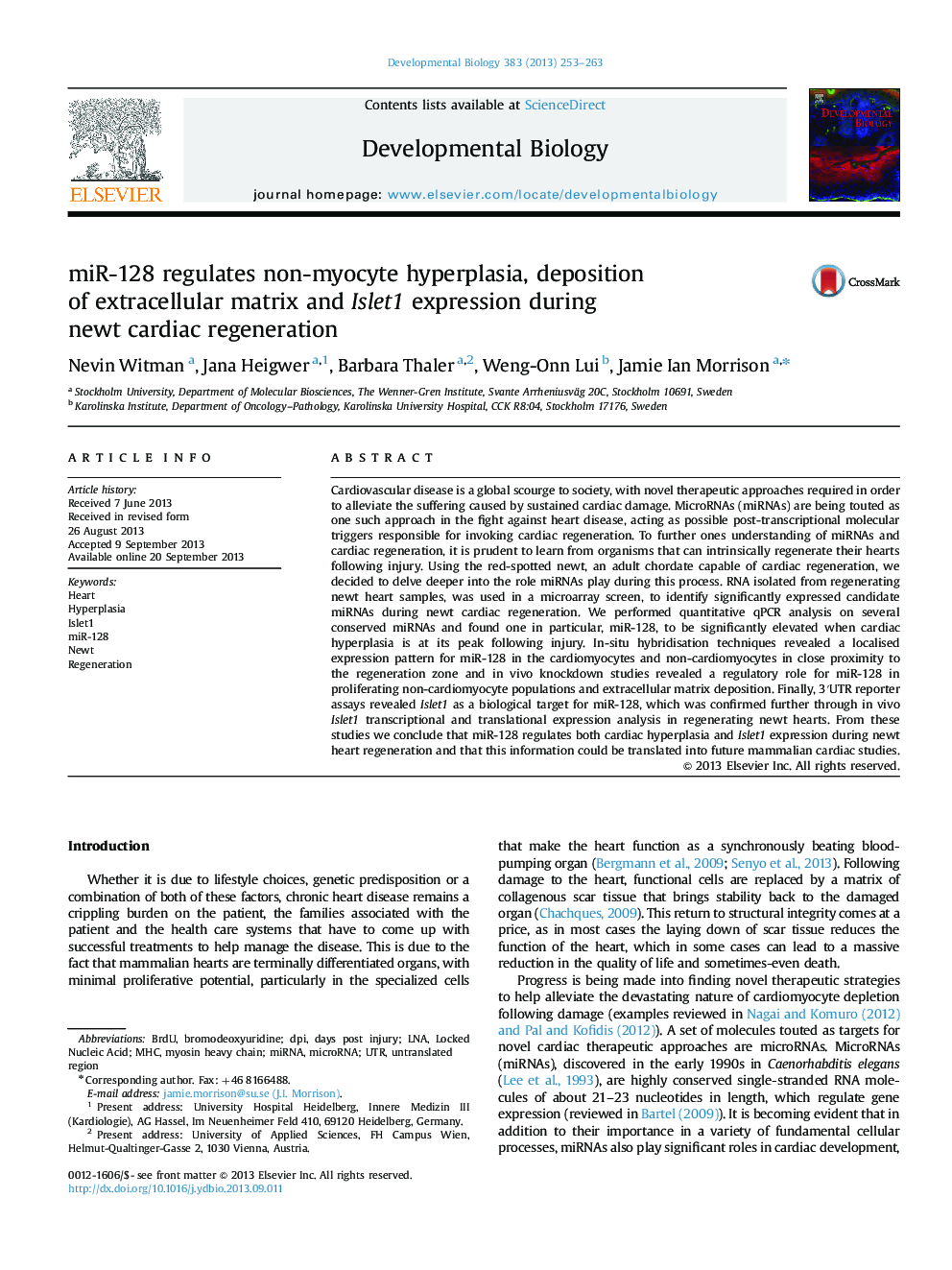| Article ID | Journal | Published Year | Pages | File Type |
|---|---|---|---|---|
| 2173040 | Developmental Biology | 2013 | 11 Pages |
•miR-128 is significantly elevated at times synonymous with cardiac hyperplasia.•miR-128 is expressed in and around the regeneration zone of the newt heart.•The proliferation of non-cardiomyocytes is negatively regulated by miR-128.•Delayed cardiac regeneration following in vivo miR-128 depletion.•Islet1 is negatively targeted by miR-128 during newt cardiac regeneration.
Cardiovascular disease is a global scourge to society, with novel therapeutic approaches required in order to alleviate the suffering caused by sustained cardiac damage. MicroRNAs (miRNAs) are being touted as one such approach in the fight against heart disease, acting as possible post-transcriptional molecular triggers responsible for invoking cardiac regeneration. To further ones understanding of miRNAs and cardiac regeneration, it is prudent to learn from organisms that can intrinsically regenerate their hearts following injury. Using the red-spotted newt, an adult chordate capable of cardiac regeneration, we decided to delve deeper into the role miRNAs play during this process. RNA isolated from regenerating newt heart samples, was used in a microarray screen, to identify significantly expressed candidate miRNAs during newt cardiac regeneration. We performed quantitative qPCR analysis on several conserved miRNAs and found one in particular, miR-128, to be significantly elevated when cardiac hyperplasia is at its peak following injury. In-situ hybridisation techniques revealed a localised expression pattern for miR-128 in the cardiomyocytes and non-cardiomyocytes in close proximity to the regeneration zone and in vivo knockdown studies revealed a regulatory role for miR-128 in proliferating non-cardiomyocyte populations and extracellular matrix deposition. Finally, 3′UTR reporter assays revealed Islet1 as a biological target for miR-128, which was confirmed further through in vivo Islet1 transcriptional and translational expression analysis in regenerating newt hearts. From these studies we conclude that miR-128 regulates both cardiac hyperplasia and Islet1 expression during newt heart regeneration and that this information could be translated into future mammalian cardiac studies.
